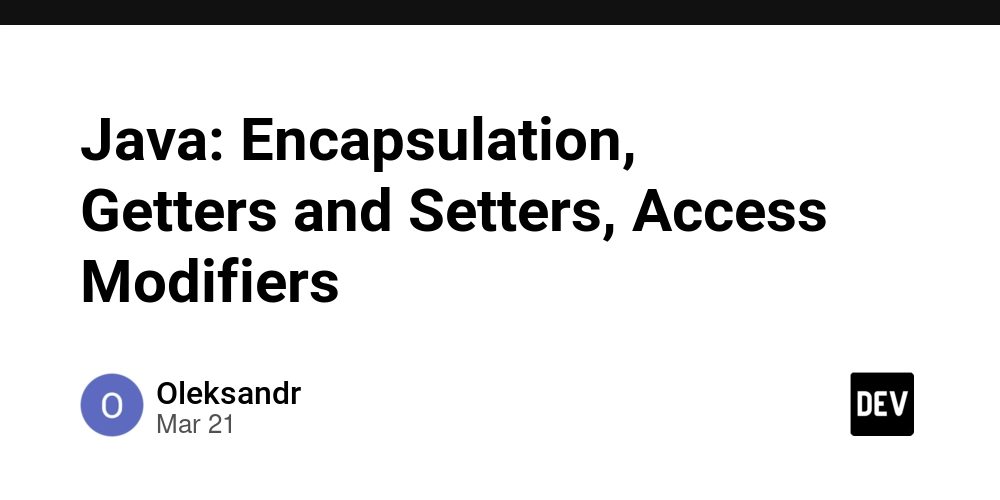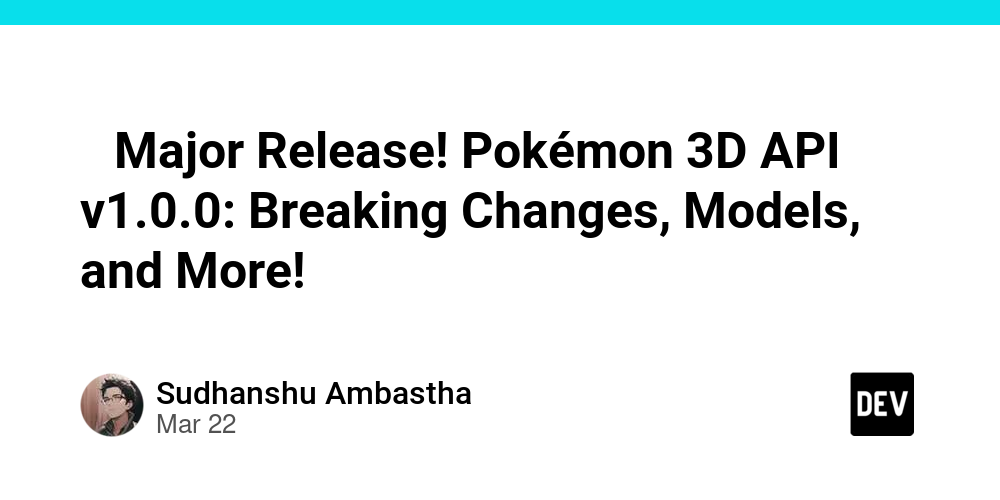Java: Encapsulation, Getters and Setters, Access Modifiers
Hey everyone! In my previous post, I covered constructors, return methods, and comments — essential concepts in Java. Today, we’ll continue exploring Object-Oriented Programming (OOP) by learning about encapsulation, getters and setters, access modifiers, and why modifying values directly isn’t a good practice. Encapsulation in Java Encapsulation is used to hide the values or state of a structured data object inside a class, preventing unauthorized direct access to them. Instead of allowing values to be changed freely, we use getters and setters to control access and ensure data integrity. Why use encapsulation? ✅ Keeps data safe by limiting access. ✅ Provides better control over how data is modified. ✅ Makes your code easier to maintain. Access Modifiers Access modifiers define the visibility of classes, methods, and variables. Java has four main access modifiers: public: Accessible from anywhere. default: Accessible within the same package protected: Accessible within the same package and by subclasses private: Accessible only within same class Example of Encapsulation with Getters and Setters: class Car { // Private fields to ensure data protection private String brand; private int maxSpeed; // Constructor to initialize values public Car(String brand, int maxSpeed) { this.brand = brand; this.maxSpeed = maxSpeed; } // Getter method for the brand public String getBrand() { return brand; } // Setter method for the brand public void setBrand(String brand) { this.brand = brand; } // Getter method for maxSpeed public int getMaxSpeed() { return maxSpeed; } // Setter method for maxSpeed public void setMaxSpeed(int maxSpeed) { this.maxSpeed = maxSpeed; } public void outputValues() { System.out.println("Brand: " + brand); System.out.println("Max Speed: " + maxSpeed); } } public class Main { public static void main(String[] args) { Car car = new Car("BMW", 250); // Using getter to display values System.out.println("Initial brand: " + car.getBrand()); // Using setter to update values car.setBrand("Audi"); car.setMaxSpeed(300); // Display updated values car.outputValues(); } } Output: Initial brand: BMW Brand: Audi Max Speed: 300 Why Avoid Direct Value Modification? Directly changing field values bypasses important checks and logic that ensure data consistency. Using getters and setters allows you to: ✅ Add validation rules. ✅ Control how values are updated. ✅ Improve code flexibility and scalability. Summary ✅ Encapsulation protects your data by using private fields. ✅ Getters and setters help control how data is accessed and modified. ✅ Access modifiers define what can be accessed from where. Whats next In the next post, we'll explore the topic of inheritance, method overriding, and polymorphism in Java. To practice, I suggest writing your own class with private fields, using both getters and setters. Try experimenting with access modifiers to understand their behavior better.

Hey everyone!
In my previous post, I covered constructors, return methods, and comments — essential concepts in Java. Today, we’ll continue exploring Object-Oriented Programming (OOP) by learning about encapsulation, getters and setters, access modifiers, and why modifying values directly isn’t a good practice.
Encapsulation in Java
Encapsulation is used to hide the values or state of a structured data object inside a class, preventing unauthorized direct access to them. Instead of allowing values to be changed freely, we use getters and setters to control access and ensure data integrity.
Why use encapsulation?
✅ Keeps data safe by limiting access.
✅ Provides better control over how data is modified.
✅ Makes your code easier to maintain.
Access Modifiers
Access modifiers define the visibility of classes, methods, and variables. Java has four main access modifiers:
-
public: Accessible from anywhere. -
default: Accessible within the same package -
protected: Accessible within the same package and by subclasses -
private: Accessible only within same class
Example of Encapsulation with Getters and Setters:
class Car {
// Private fields to ensure data protection
private String brand;
private int maxSpeed;
// Constructor to initialize values
public Car(String brand, int maxSpeed) {
this.brand = brand;
this.maxSpeed = maxSpeed;
}
// Getter method for the brand
public String getBrand() {
return brand;
}
// Setter method for the brand
public void setBrand(String brand) {
this.brand = brand;
}
// Getter method for maxSpeed
public int getMaxSpeed() {
return maxSpeed;
}
// Setter method for maxSpeed
public void setMaxSpeed(int maxSpeed) {
this.maxSpeed = maxSpeed;
}
public void outputValues() {
System.out.println("Brand: " + brand);
System.out.println("Max Speed: " + maxSpeed);
}
}
public class Main {
public static void main(String[] args) {
Car car = new Car("BMW", 250);
// Using getter to display values
System.out.println("Initial brand: " + car.getBrand());
// Using setter to update values
car.setBrand("Audi");
car.setMaxSpeed(300);
// Display updated values
car.outputValues();
}
}
Output:
Initial brand: BMW
Brand: Audi
Max Speed: 300
Why Avoid Direct Value Modification?
Directly changing field values bypasses important checks and logic that ensure data consistency. Using getters and setters allows you to:
✅ Add validation rules.
✅ Control how values are updated.
✅ Improve code flexibility and scalability.
Summary
✅ Encapsulation protects your data by using private fields.
✅ Getters and setters help control how data is accessed and modified.
✅ Access modifiers define what can be accessed from where.
Whats next
In the next post, we'll explore the topic of inheritance, method overriding, and polymorphism in Java.
To practice, I suggest writing your own class with private fields, using both getters and setters. Try experimenting with access modifiers to understand their behavior better.








































































































































































![[The AI Show Episode 143]: ChatGPT Revenue Surge, New AGI Timelines, Amazon’s AI Agent, Claude for Education, Model Context Protocol & LLMs Pass the Turing Test](https://www.marketingaiinstitute.com/hubfs/ep%20143%20cover.png)

































































































































![From drop-out to software architect with Jason Lengstorf [Podcast #167]](https://cdn.hashnode.com/res/hashnode/image/upload/v1743796461357/f3d19cd7-e6f5-4d7c-8bfc-eb974bc8da68.png?#)








































































































.jpg?#)































_ArtemisDiana_Alamy.jpg?#)


 (1).webp?#)






































































-xl.jpg)














![Yes, the Gemini icon is now bigger and brighter on Android [U]](https://i0.wp.com/9to5google.com/wp-content/uploads/sites/4/2025/02/Gemini-on-Galaxy-S25.jpg?resize=1200%2C628&quality=82&strip=all&ssl=1)









![Apple Rushes Five Planes of iPhones to US Ahead of New Tariffs [Report]](https://www.iclarified.com/images/news/96967/96967/96967-640.jpg)
![Apple Vision Pro 2 Allegedly in Production Ahead of 2025 Launch [Rumor]](https://www.iclarified.com/images/news/96965/96965/96965-640.jpg)




































































































































